Thrill Rides: 8 Great Shore Diving Spots
Shore diving can be the ultimate do-it-yourself adventure. Here are eight of the most extreme shore dives on the planet. Are you up to the challenge?
Shore diving can be the ultimate do-it-yourself adventure. Here are eight of the most extreme shore dives on the planet. Are you up to the challenge?
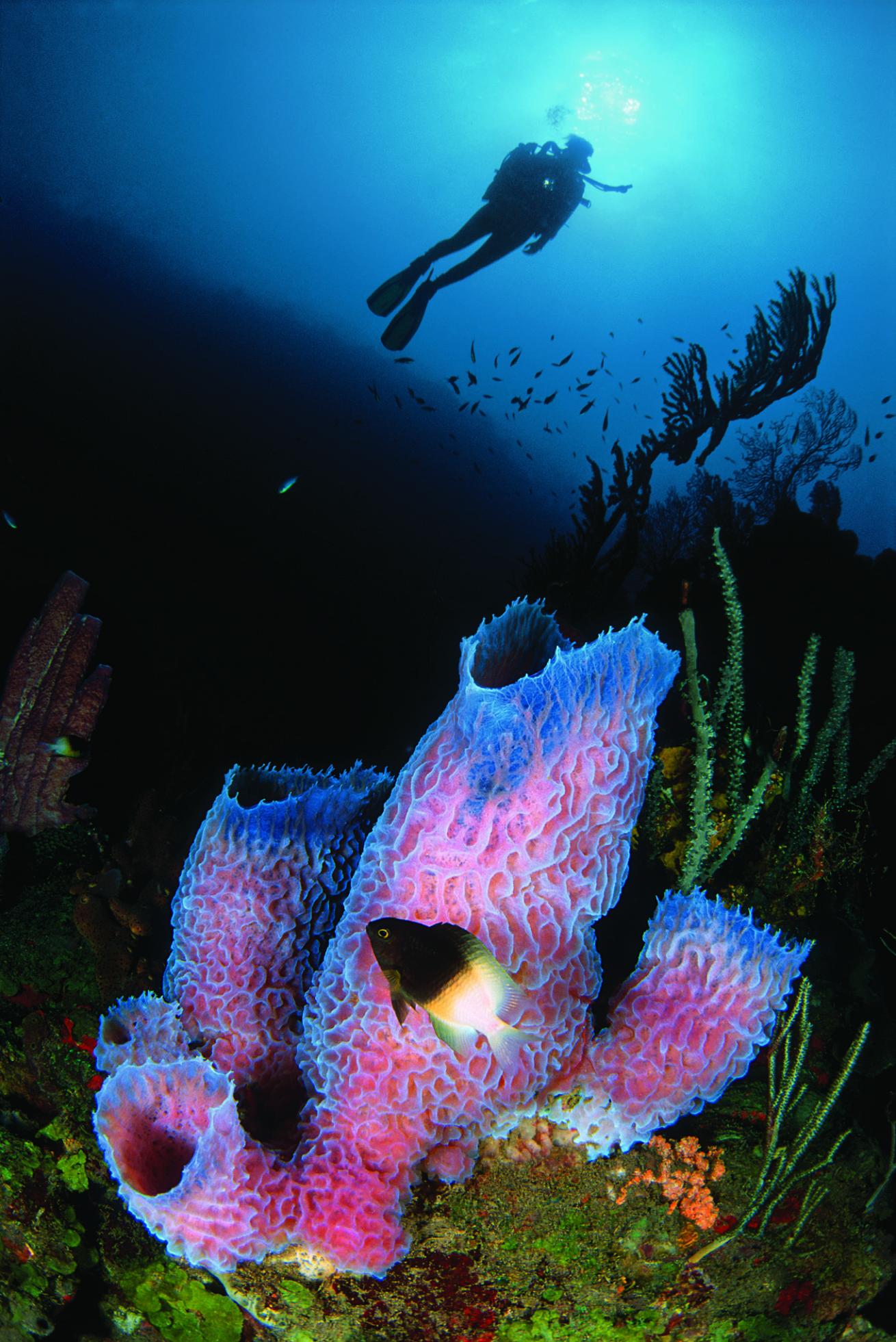
Espen Rekdal1. Washikemba, Bonaire
“Chicken out, and you have a big problem,” says Augusto Montbrun. The dive-operations manager of Buddy Dive Resort takes only those with advanced and nitrox certifications to the east-coast site known as Washikemba, 20 minutes by car from the Kralendijk resort. The dive is deep, but it’s the challenging entry and exit points that give some pause. Reach the water by cliff jumping 20 feet. To ensure enough ocean pillows your landing, time your giant stride with the incoming rollers. From there, swim 10 minutes to reach the reef, which drops off to around 120 feet. The little-dived site lies in a protected inlet near a lagoon located roughly mid-island and offers just the sort of shelter to which baitballs swarm. Only the east coast supports a shark population; here they patrol the coast regularly, as do barracuda and queen triggerfish. This unspoiled site is also home to dozens of lobsters, which attract nurse sharks that feast on the delicacy. “Here I’ve seen a nurse shark with a full belly, and it was still surrounded by even more lobsters,” Montbrun says. To end the dive, time your exit with an incoming wave and you’ll be hoisted atop a smooth, rocky ledge. Opt out of the waterslide-like finish, and you’ll face a long swim to a flatter environment. “If you come to Bonaire,” says Montbrun, “don’t expect to do this on the first day. You’ll freak out for sure."
MAKE IT HAPPEN: Buddy Dive Resort offers guided dives on the east coast for $45 per person; gear and transportation not included.
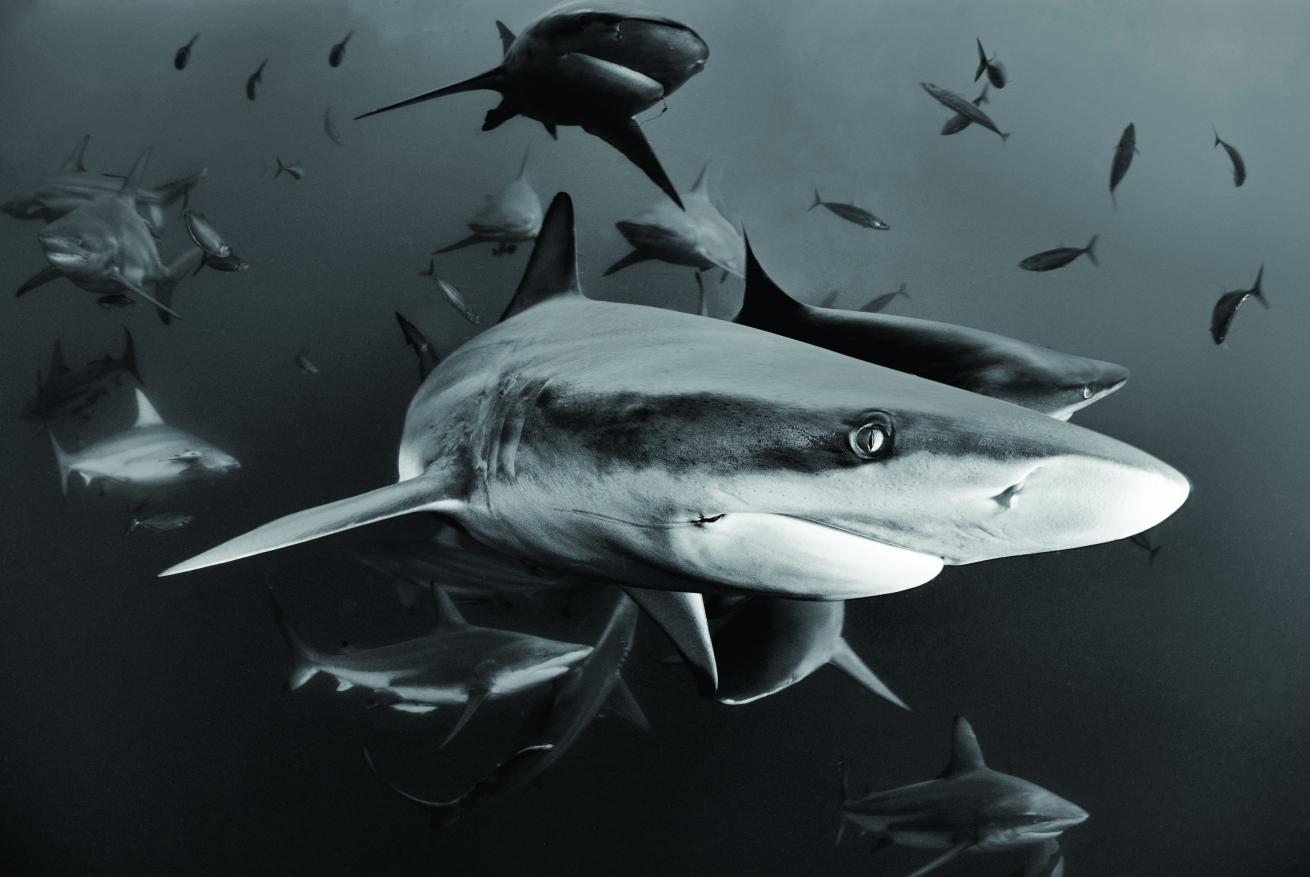
Eric Cheng2. BOTCH (bottom of the channel), Uepi, Solomon Islands**
“When you first approach 20 to 30 sharks near the jetty, it can be quite exciting, and a bit scary,” says Uepi Island manager Lee Fewster of this current-swept channel and its 360-degree view. “But once divers see that the sharks aren’t aggressive, they’re able to calm down and take it all in.” After a leap from the jetty, you’ll descend to 90 feet and head into the passage. Strong tidal changes complicate the swim but account for the 100 feet of visibility. Here you’ll find schools of passing bull and blue spotted rays. The sand dunes provide habitat for a massive colony of garden eels, as well as sea pens and mantis shrimp. Kick out to Shark Bommie, one of the coral-covered pinnacles that rises from the bottom at 120 feet. Circle the formation and be sure to look up: Eagle rays and sharks often cruise by overhead. The pinnacle is also an ideal spot to hunt for macro life, such as the 55 species of nudibranchs local to the area. On the return swim, you’ll likely encounter schools of scad, perch and snapper that collect by the thousands. Be ready to come nose to nose with at least 20 circling blacktip sharks. “It’s an experience that makes many people nervous,” says Fewster. “It’s definitely not something you get to see in many other places.”
MAKE IT HAPPEN Uepi Island Resort offers guided dives starting at $72 per person.
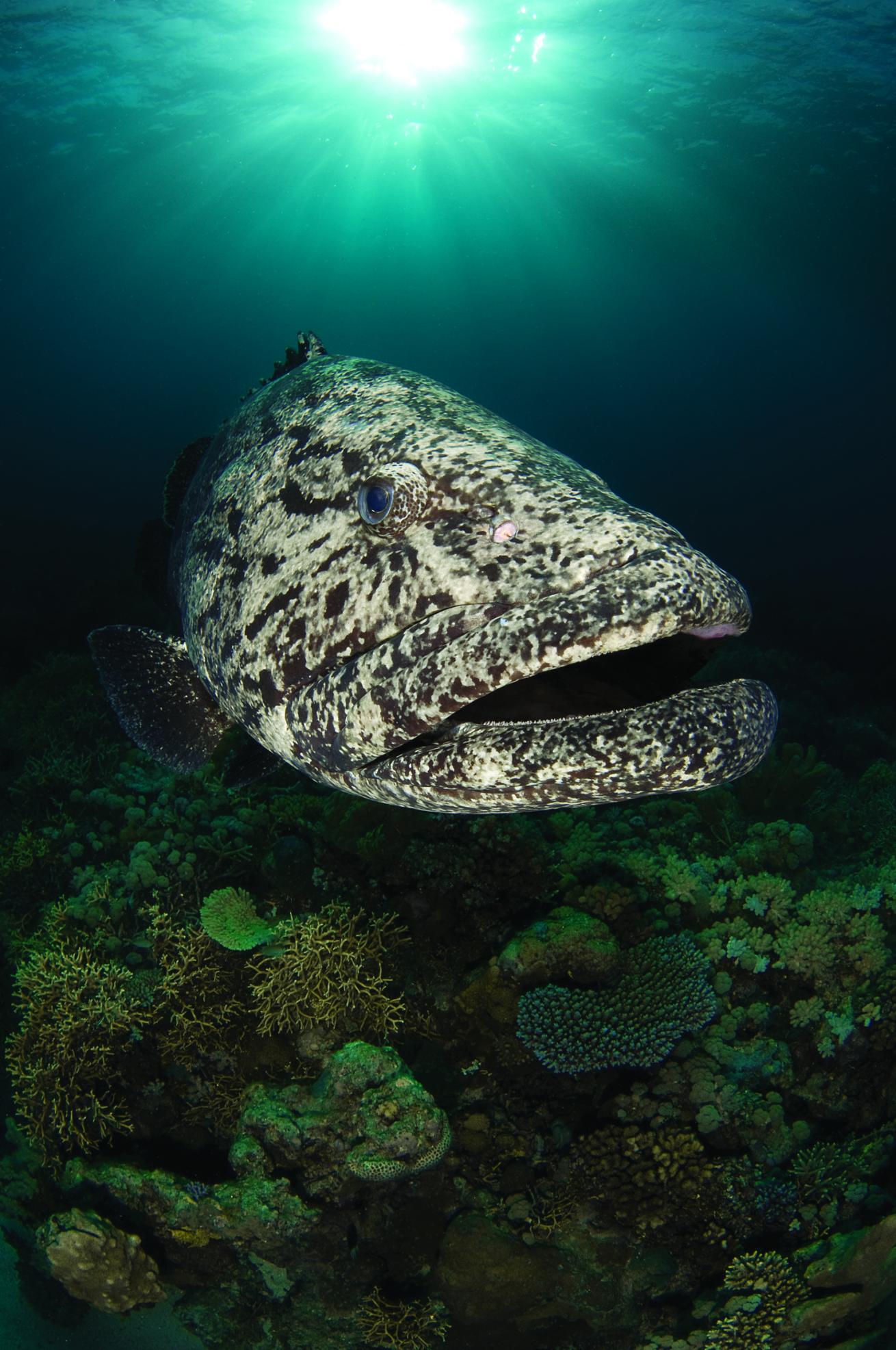
Richard Robinson3. Honeycombs, Yallingup, Western Australia
“The unprepared will be raked across the bottom,” says Peter Macdonald, owner of the Dive Shed in the nearby town of Busselton. But the site remains popular for consistently delivering memorable encounters. Visitors to the high-energy coastline always net a new reward, especially in summer when temperate and tropical currents converge here. Passing pelagics are always a strong possibility. But before you put in, be honest about your skills. Even on calmer days at this bay — noted among landlubbers for rock walls rising from the water to create a natural canal — Macdonald says that “your buoyancy will be tested, for sure.” Waving your arms while fighting current is a quick way to embarrass yourself and, worse, damage the reef. Perhaps more important than staying neutral is packing common sense. Divers readying at the Canal Rocks Boat Ramp must read the waves and be sensible about choosing to dive or not. If deemed doable, it’s roughly a 150-yard swim to the reef, home to nudibranchs, sea stars and rock — aka spiny — lobsters. Scores of western blue devilfish guard their lairs among the wave-eroded corals that inspired the site’s name. In the water column, salmon compete with sampsonfish to nip off the weak from the ever-present fish schools. The currents wash through quickly, and predators aim to keep pace, creating a stir that’s high energy indeed.
MAKE IT HAPPEN: The Dive Shed charges $104 for a guided dive that includes gear rental.
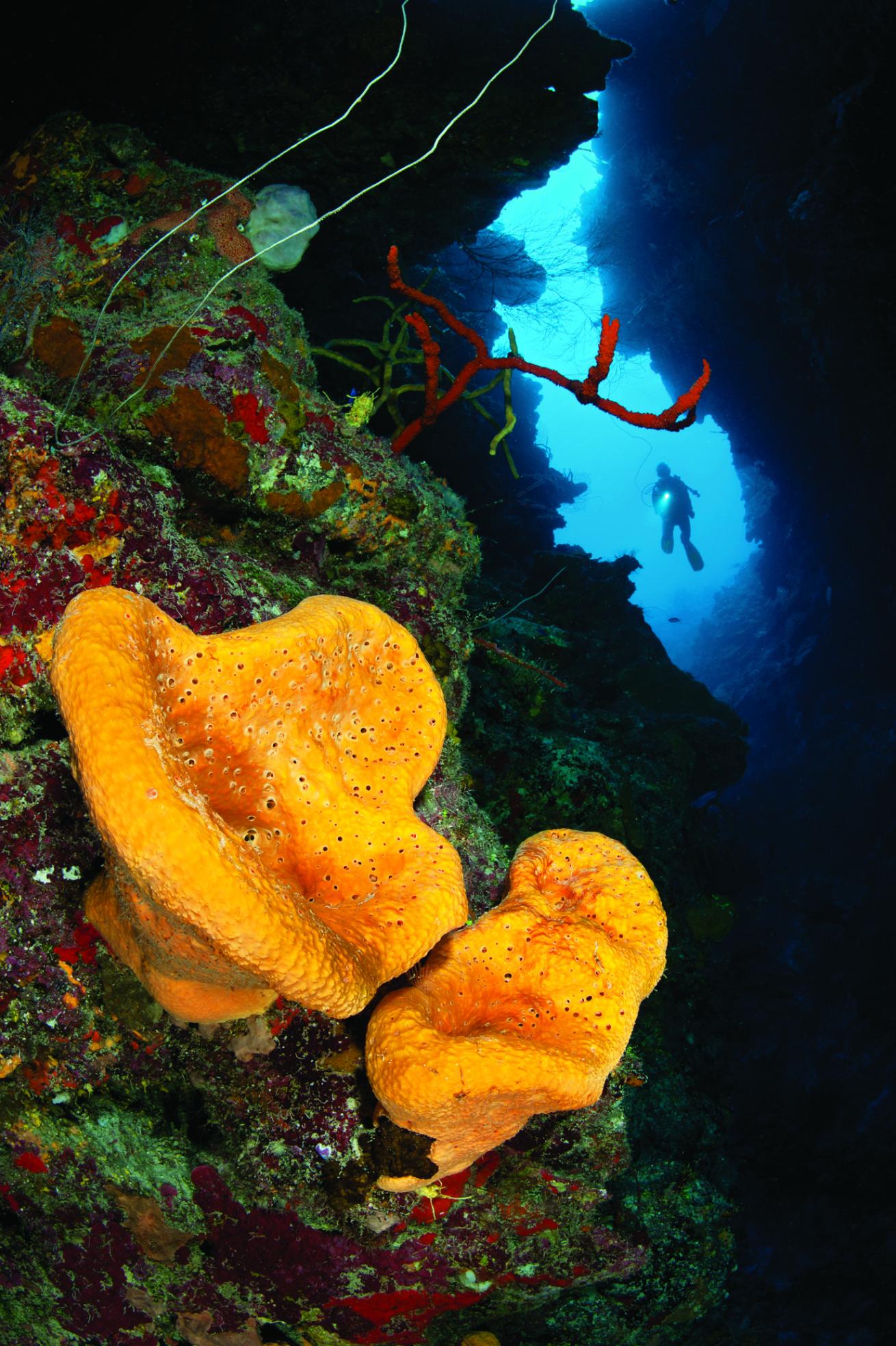
Alex Mustard4. Lighthouse Point, Grand Cayman
Start with a sheer wall that plunges to 4,000 feet. Add a scooter, tons of pelagics and epic visibility, and you have Grand Cayman’s most adrenaline-filled dive. Located off Lighthouse Point 20 minutes north of Georgetown, the site lies just off a 100-foot-long jetty. Giant-stride in or climb down the ladder, then it’s a quick swim to the action. Conditions rarely vary from ideal: no wind, waves or current. The scooter saves air consumption considerably and allows you to keep pace with marine life — and you’ll see a ton of it. Eagle rays, nurse sharks and turtles cruise by regularly, often in numbers that will inspire jealousy come happy hour. Divetech instructor Helen Artal finds that seeing as many as 14 eagle rays in one dive here is fairly typical. “You’d be unlucky not to see turtles here,” she adds, mentioning that divers will also likely encounter behaviors not commonly witnessed elsewhere on island. Because on average no more than 20 people explore the site each day, wildlife is less disturbed. Artal has seen flounder mate and stingrays stir up clouds of sand while hunting.
MAKE IT HAPPEN: A Divetech instructor will guide you with a scooter for $90. Note that with a scooter, depth will be limited to 100 feet.
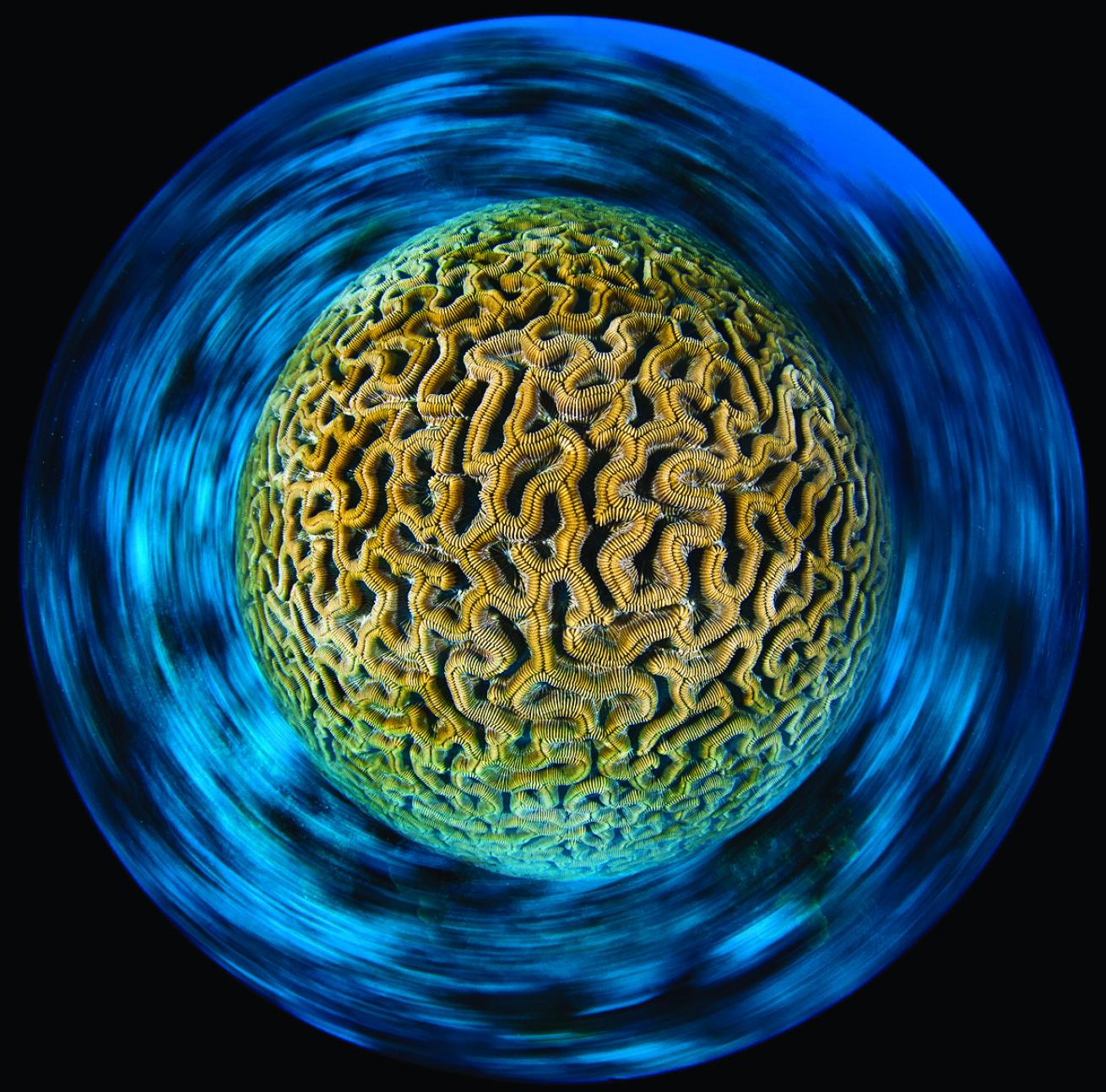
Alex Mustard5. North Star, St. Croix, USVI
When the dizziness hits — and it will — fix your gaze on anything but the inverted incline. Even if forewarned, you’ll struggle against your physical reaction. As you face the inward-sloping reef, your mind grapples with the orientation. We’re accustomed to walls that plummet at right or obtuse angles from the reef. To reset your senses, you’ll need an alternate visual clue: A quick study of your bubble stream works well. Several dives along St. Croix’s northwest coast trigger this sensation — most notably North Star, about a mile west of Cane Bay Dive Shop. Grab a guide and a lift to the drop-in (it’s more fun if you don’t have to double back). This stretch of reef is particularly healthy, teeming with fish from creole wrasse to barracuda. Drop down to 50 feet to find a cave where turtles and green morays regularly seek shelter. Where the reef forms a horseshoe, you’ll want to kick out toward the blue to find a pinnacle that’s a favorite among Caribbean reef sharks. Back along the wall, try to enjoy the heady rush of vertigo as it takes hold. This slight disorientation is perfectly safe as long as you stay calm — so go ahead, lean back to take in the view and fully appreciate this radical setting.
MAKE IT HAPPEN: At Cane Bay Dive Shop, $40 buys you a guide, a tank and most likely a lift to the put-in for this drift dive.
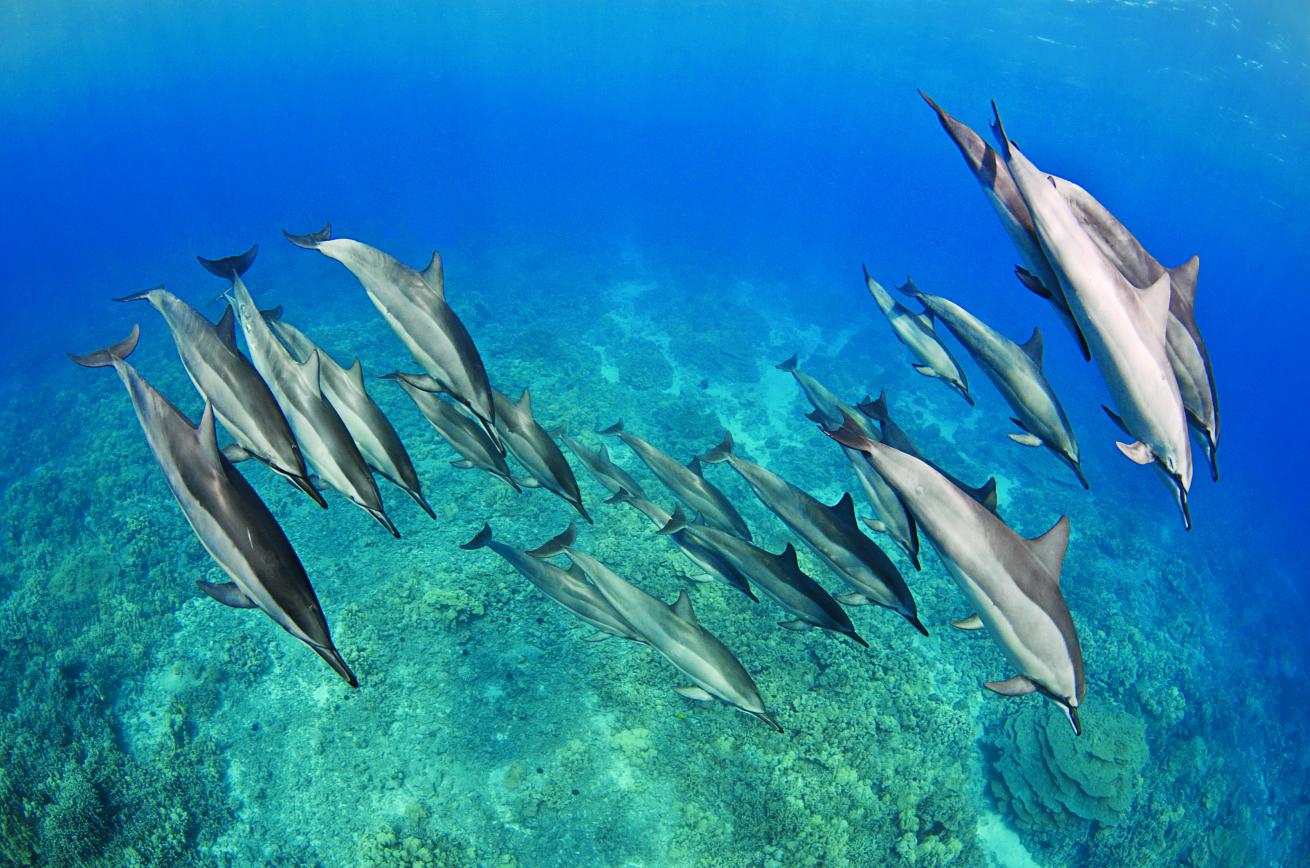
Keri Wilk6. Nu’u Bay, Maui, Hawaii
To pull off a more extreme shore dive on Maui, you’d need to be a mountain goat. Skip the rock scramble and instead opt for what is possibly Maui’s most pristine dive that’s seen by very few. Its ultra-remote location about 20 miles south of Hana deters many, including those who heed signs advising rental-car drivers to turn back. Carry on, and you’ll be rewarded with Nu’u Bay, located just on Kaupo Road on the island’s south side. The inlet is well protected from wind and swell, making entry a snap. You’ll find a footpath that leads through lava fields to the rocky beach. Follow the coast to the left to enter. You’ll soon be swimming alongside giant trevally that swell to 100 pounds or greater. Silvery milkfish measure six feet long. Gray reef sharks, spinner dolphins, mantas and eagle rays all are fairly common. Sightings of hammerheads and tiger sharks are also possible. Elsewhere on island, you’ll need several dives to see a dozen butterflyfish species, but at Nu’u Bay, just one. “Everything you see here you can see anywhere on Maui,” says Teri Leonard, manager of Maui Dreams Dive Co. But here “the life is so much larger and more prevalent.”
MAKE IT HAPPEN: Maui Dreams Dive Co. can supply tanks for $5 apiece.
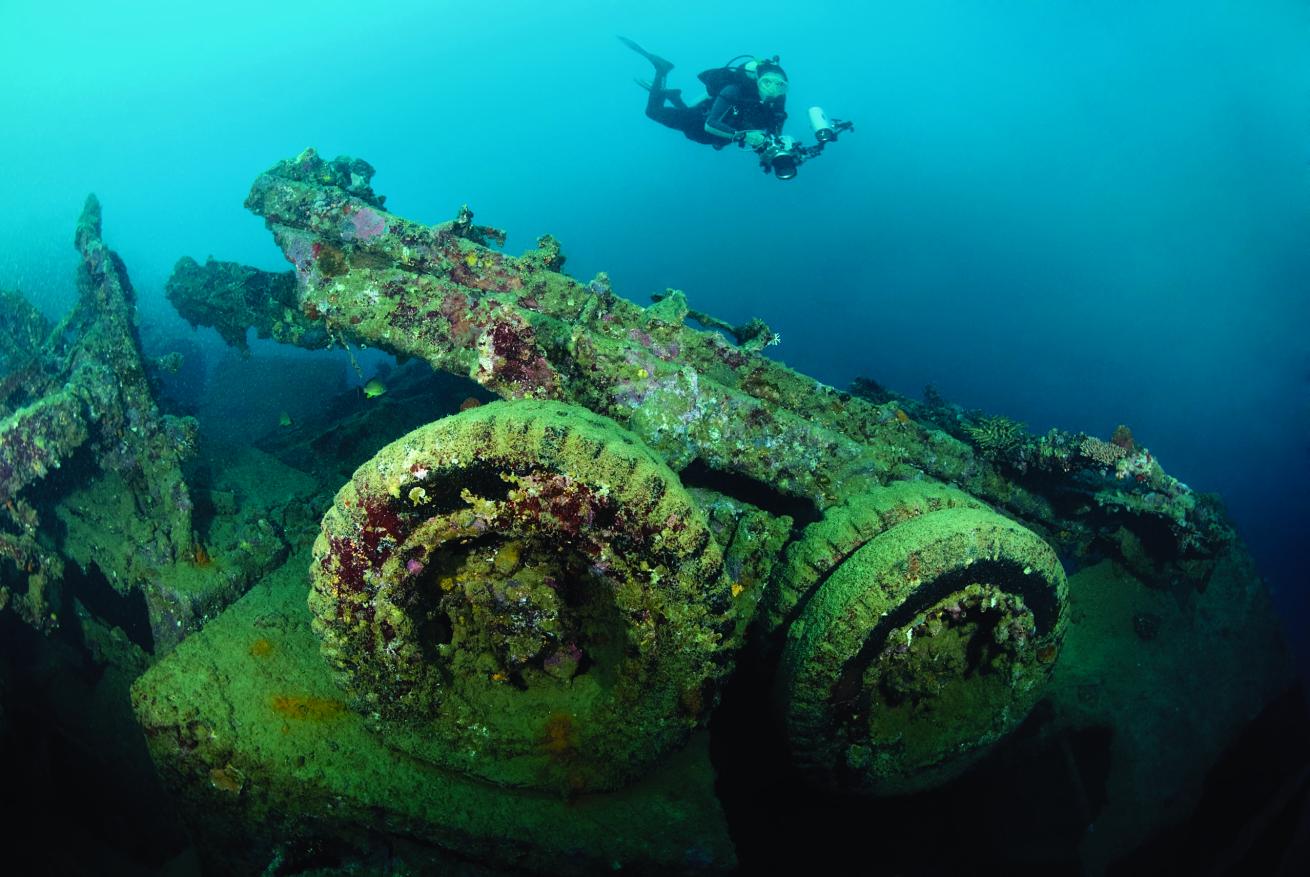
Felipe Barrio7. SS President Coolidge, Espiritu Santo Island, Vanuatu
It’s touted as the world’s largest shore-accessible wreck: The 654-foot-long passenger ocean liner-cum-troopship is just a two-minute swim from shore, with a deck that starts at a depth of about 65 feet. Doesn’t sound extreme? The behemoth rests on a 45-degree slope, with its deepest point about 240 feet down. Given the number of holds and penetration points, the site can be as easy or as challenging as you decide to make it. Guns, cannons, jeeps, gas masks, medical supplies, ammunition and other intact gear still lie within the coral-encrusted walls. Given the ship’s first life as a luxury ship, the art-deco details such as chandeliers provide another layer of interest. One highlight beloved by photographers is the first-class smoking room’s carving of the lady and the unicorn, a sharp contrast to the spartan lives of those troops who later served aboard. The vessel now rests on its port side, making navigation slightly more difficult, but the sea conditions couldn’t be more favorable. Much of the time expect calm, clear waters that attract marine life ranging from moray eels to dugongs. Turtles also regularly stake out real estate. But perhaps the most memorable and chilling feature of the Coolidge are the men’s personal effects: typewriter, hairbrush, talcum-powder bottle. No other wreck provides such an intimate look into the lives of those aboard who braved duty.
MAKE IT HAPPEN: For divers with their own gear, a shore dive to the wreck costs $51.06 with Allan Power Dive Tours.
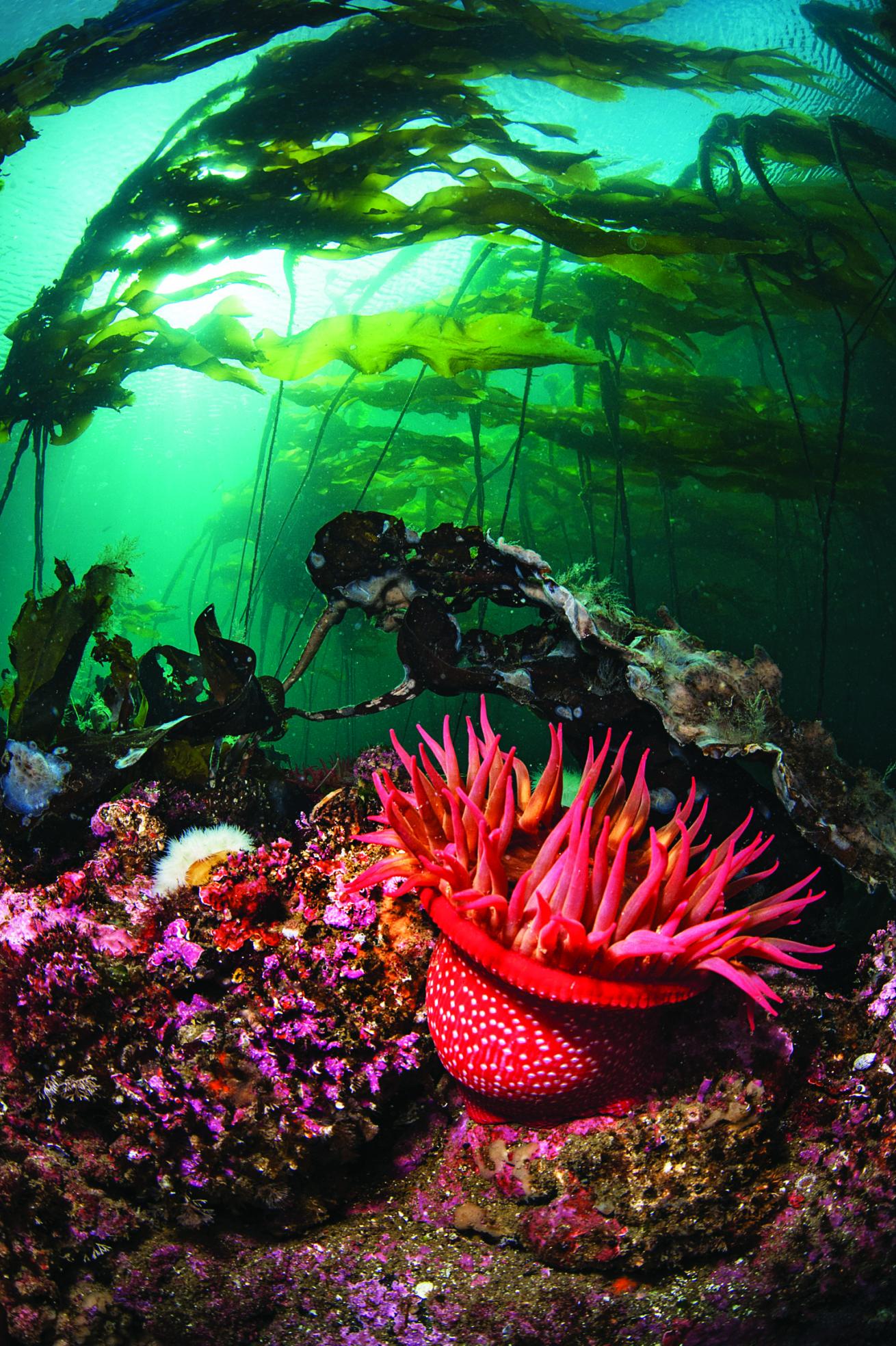
Alex Mustard8. Deception Pass, Whidbey Island, Washington
The window to start the dive is incredibly small. “Read the kelp,” says Pat Beach, owner of Whidbey Island Dive Center. “When it stands up, you enter.” Park and gear up at Deception Pass State Park, about 90 minutes by car from Seattle. You’ll have approximately 10 minutes of slack tide before the current starts to carry you from the put-in at the right side of North Beach. Here, fast currents are synonymous with an abundant nutrient flow. The marine life here is bigger, fatter and more active. Expect to see larger-than-normal lingcod, octopuses and worms, says Beach. It’s one of the area’s most beautiful sites, but it’s also one of the most challenging for the untrained. “Every time we head to this site, we’re ready for a dangerous dive,” he says. “But because we prepare, it ends up being easy.” Site regulars acknowledge that the spot attracts those looking for an adrenaline fix. “For some, it’s like the need to climb a mountain,” Beach says.
MAKE IT HAPPEN: For those with at least 100 cold-water dives, Whidbey Island Dive Center offers two dives at the site for $100.










